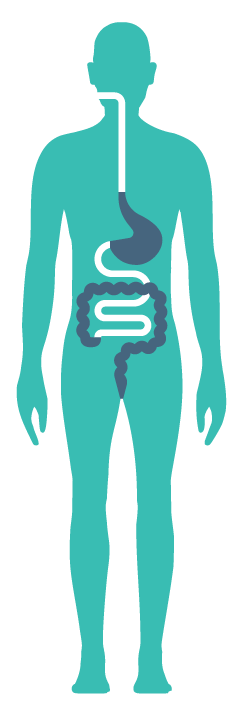Tracking Fat from Digestion to Delivery
Fat Fundamentals
Story by Eric Bender

Our bodies are truly excellent at holding onto fat. “We absorb more than 95% of what we consume,” says Kimberly Buhman, professor of nutrition science.
She studies how the body processes lipids, a class of organic compounds that includes fats (such as triglycerides) and cholesterol, in animal models. More specifically, she examines how lipids are digested and processed in the small intestine and how these processes change with different levels of fat consumption and varied body weights.
Normally, cells in the small intestine called enterocytes package triglycerides and cholesterol together with proteins into “lipoproteins.” The lipoproteins then travel through the blood and are dropped off to provide energy or material to build cells as needed. But if we eat too much, the extra lipids end up stored in fatty tissue.
Until recently, biologists thought that enterocytes functioned simply as thoroughfares — nutrients come in, nutrients go out. But work by Buhman and her colleagues has examined how these cells also can store the lipids in droplet form, helping to handle sudden bursts of fat.
“After you eat a large milkshake, with 50 grams of fat, you don’t want all of that fat in your blood immediately, since that would be a big shock to your system,” she says. “These cells take it up, and only let out a certain amount at a time, while the rest backs up in the cell.”
Alyssa Zembroski, a graduate student in Buhman’s lab, is looking at how lipid droplets in different regions along the length of the small intestine may influence fat absorption — for instance, what happens when high-fat diets move more fat into the lower reaches of the small intestine. “It’s really interesting to be involved in research that might affect how we treat obesity or other lipid metabolism disorders in the future,” Zembroski says. “Understanding these processes at the cellular level is fundamental for understanding how these disorders affect a whole body.”
“People who are chronically eating high-fat diets and are obese are processing dietary fat and delivering it in a different way than a lean person,” Buhman says. “If we can modify that process, it might help in reducing obesity and its associated health problems.”
More Life 360 Stories
Milestones
Students
- Dean’s Message
- Speak Up
- Soccer and Scientists
- A Call to Nursing
- Upgrade
- "What was a GIANT LEAP in your life?"
Faculty
- Dean’s Message
- Speak Up
- Your Friends at Your Fingertips
- Environment for Obesity
- Getting and Early Start on Success
- Beyond 'You are What You Eat'
- Tracking Fat from Digestion to Delivery
- Reducing Obesity and Improving Lives One Community at a Time
- Is Your Drinking Water Safe?
- "What was a GIANT LEAP in your life?"
Alumni
- Dean’s Message
- Breaking the Silence
- A Whole New World
- Grady Eifert
- Giant Leaps Series
- Upgrade
- Hello!
- "What was a GIANT LEAP in your life?"
